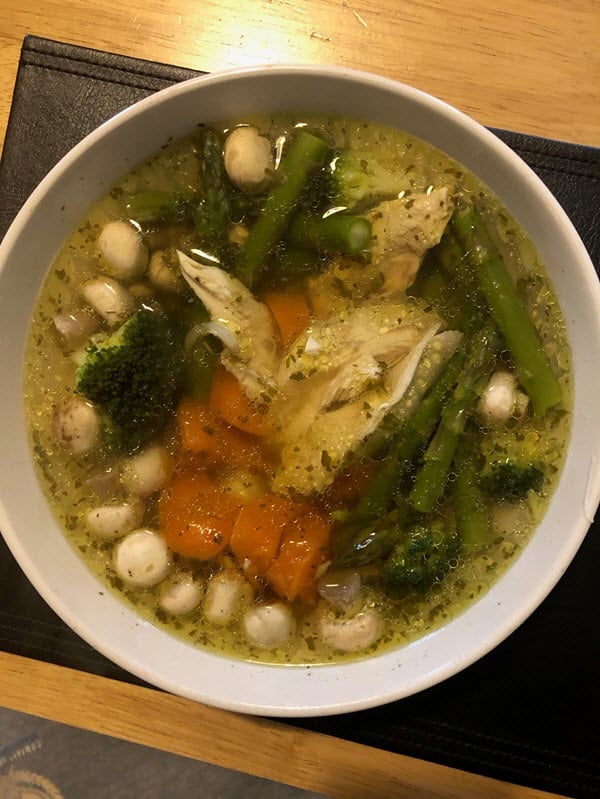Why ‘Looking Well’ with Chronic Illness is Important to Me

‘Looking Well’ with Chronic Illness.
A few days ago my sister and her family visited me. It was a nice visit, but all too short. This is a consequence of the continuous pain I experience that can be exacerbated by simple conversations. The concentration required can bring my pain from its base of five to a seven, on a ten point scale. However, as my sister was leaving, one of her final remarks was, “you are looking well”.
If you, like me, keep an eye on Facebook groups or on Twitter feeds that are all about chronic illness, you will know that many people are frustrated, in fact annoyed, by this simple phrase. “How dare they say this when I am in so much pain?” is an example of the anger that is sometimes expressed.
But when I hear those four simple words, I think, “I am succeeding”.
“How can this be?” you might ask.
Yes, I am in pain all the time, my walking has slowed down to a snail-like pace. I am ill. I am one of the many people living with several chronic illnesses: chronic pain, multiple sclerosis, sarcoidosis, asthma, dark days (but not quite depression) and erythema nodosum are my various medical complaints, but I will not die because of these conditions. Although they have a huge impact on my life, I still strive to live my life.
Taking back control
My partner and I have a plan. It’s for me to be as healthy as I can be, despite the circumstances. In my opinion, a healthy mind and body are critical in learning how to live with a chronic disease.
If I was well, my need to be successful in how I live my life and its impact on my general health wouldn’t have as far-reaching consequences. But now, living with chronic conditions, means everything I do must be done in the best way possible.
For me there are two elements to living healthy. The first is to maintain your physical health and the second is to maintain your mental health.
Both take work but here are my top seven tips:
Let’s get physical!
-
I Reassessed my diet
I look after my body by ensuring it is fuelled properly. After much research using Google, I have created my own ‘Autoimmune Protocol Diet’. Key elements are:
- No grains (wheat, oats, corn, rice etc. are all excluded)
- No additives, chemicals or preservatives (or as US author and activist Michael Pollen would say, “no food that my grandmother wouldn't know.”) Goodbye artificial monosodium glutamate!
- No tomatoes, beans, potato or aubergines (eggplant)
It took some time to get used to, but I’ve now been on this diet for nearly a year and it’s easy when I am at home. Travelling can make it more difficult, and can often cause me to lapse.

Robert's homemade soup
-
Exercise
Exercise is the next key element and this is really hard, as I suffer from fatigue. It’s difficult, but if I do not exercise my symptoms can get worse. My right leg is on a go-slow (or maybe it is on a strike completely) and so anything requiring both legs, such as walking or running, is out. So now I swim – three times a week is my goal. It’s hard to maintain this and I have weeks when I only go once, but I persevere. I always feel better as a result, and it is part of my health plan.
-
Get enough rest
Rest and sleep are important. As I don’t have a ‘job’, I sleep until I wake up naturally. No alarms for me. This means I will get the eight-plus hours that my body needs to keep me strong.
-
Go outdoors
I also try to get outside, either in the back garden to enjoy the sunshine, down to the beach, or to the local viewing point. Looking out at the wonder of nature is powerful. I’m fortunate to live in rural Ireland and only need to drive ten minutes and I’ll be somewhere beautiful. Connecting to the earth really helps me.

A view from the beach in Ireland
Mindfulness
-
Live for the moment
27 years ago after they diagnosed me, a friend of the family sat me down and talked to me about how I was handling this new situation. His words still ring true in my head, and I’ve tried to live my life with this simple principle:
The past is behind us and we cannot change it, so there is no point in dwelling on what has happened. The future is unknown, and can change our plans in an instant. So I think we shouldn’t live for the future. This moment, the very second we are living in is the most important time, so we must live it to the best of our ability. If we do this then there will be no regrets.
-
Meditate
On top of this I try to meditate 20 minutes every day. It’s a simple technique, and I’ve shared how I do this on my blog. You can do it in about 12 minutes, but my mind tends to wander and it often takes me longer.
-
Have a positive self-image
Another concept I have in my mental health toolkit is my perception of myself. I live my life in my own mind and do not look for validation or recognition from others. Their lives and history are much different to mine, so I don’t understand how they can use their experiences to try and understand mine. It would take too much mental effort, and ultimately would be pointless, so the words another person would use to describe me are for them.
This permits me to acknowledge what they say without judgement or letting it have an impact my personal mental state. This is liberating. I take the words I want.

A trip to the viewing point
I am looking well
It takes work, dedication, and perseverance to ‘look well’ when you have a chronic illness. When I look in the mirror and see someone standing tall, with a healthy visage and dressed well, I think ‘this is who I am’. My conditions might act as anchors that pull me down, but I am stronger. These weights can be difficult to carry, but I can lift them still.










